As an Amazon Associate, I earn from qualifying purchases with no additional costs for you.
It’s no surprise that Alaska, a state known for its expansive terrain and abundance of wildlife, has more than enough unique and stunning treasures to satisfy any rockhound. In this list, we have gathered information and locations for Alaska’s most common rocks and minerals, the largest US state.
In Alaska, the most common rocks and minerals you can find are:
- Obsidian
- Agate
- Geodes
- Jasper
- Soapstone
- Gold
- Jade
- Garnet
- Amethyst
- Cinnabar
Whether you’re new to rockhounding in Alaska or a frequent visitor, learning more about the different rocks, minerals, and gemstones you may find while exploring and where to look for specific ones is always useful. Use this comprehensive list of common rocks and minerals, along with their various locations, as a guide to help you find all the best treasures the state of Alaska offers.
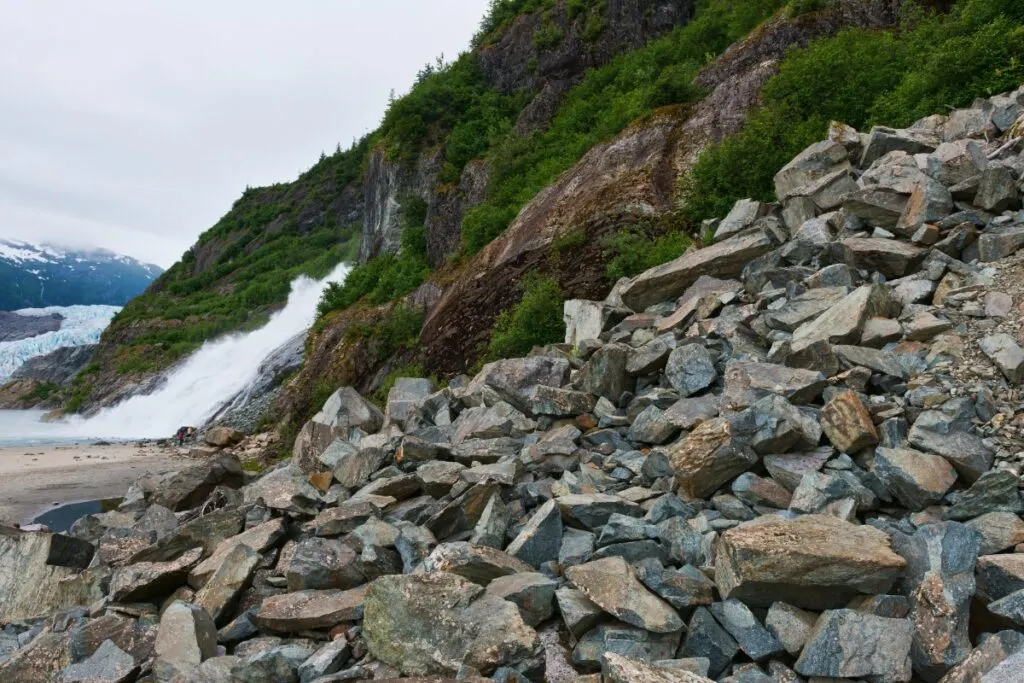
If you want to check out the best book about rockhounding in Alaska, you can find it here (Amazon link).
What Rocks Are Found in Alaska
With glaciers, volcanoes, rivers, oceans, and more, the distinctive geology of Alaska has a treasure trove of metamorphic, sedimentary, and igneous rocks, including:
Obsidian
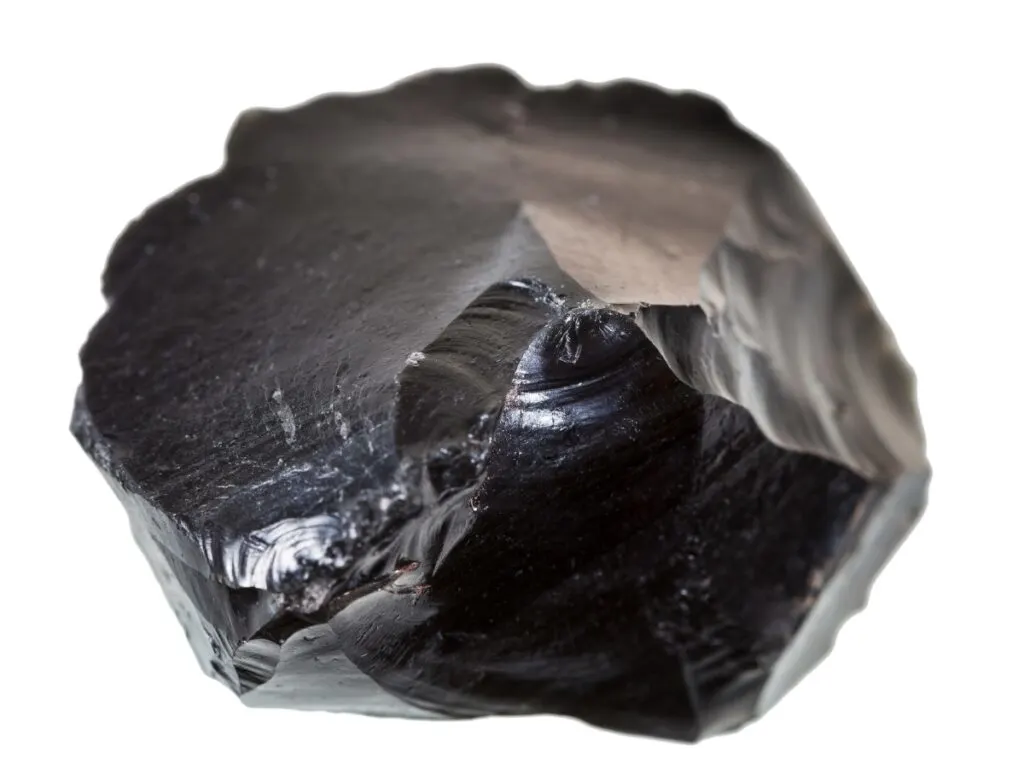
| Location | GPS Coordinates |
|---|---|
| Nenana City | 64.569374, -149.104874 |
| Batza Tena (along the Koyukuk River) | 65.194024, -157.641829 |
| Suemez Island | 55.273332, -133.309370 |
| Wiki Peak | 61.938529, -141.213596 |
| Kupreanof Island | 56.754482, -133.331154 |
| Skolai Pass | 61.646306, -141.926692 |
| Unimak Island | 54.693527, -164.298295 |
| Nanwaksjiak Crater | 60.028311, -166.080296 |
Where to Find Obsidian in Alaska
Since there are over 130 volcanoes and volcanic fields in Alaska, it’s no surprise that this state has an abundance of obsidian. This completely black volcanic rock is often used for jewelry and ornamental displays.
In ancient times, the natives who lived in Alaska used obsidian to create sharp cutting tools or weapons, so every rockhound should watch for these rarities during their travels. In the early 2000s, archeologists found solid obsidian tools in the sand of the Nogahabara Dunes of Alaska.
Because obsidian is often called volcanic glass, this discovery was named “the glass tool kit.” These obsidian tools were over 12,000 years old and in excellent condition. The tool kit discovery shows that even though obsidian might not be a hard rock, it is surprisingly durable in the right environment.
Fortunately, obsidian is a common rock in Alaska, so rockhounds should have no problem finding some pieces during their adventures.
While you can find obsidian all over the state, it’s best to stay close to volcanic areas if you want this rock. Keep an eye out for this lovely volcanic glass during all your rockhounding excursions, especially if you visit Batza Tena, Nenana City, or Kupreanof Island.
TIP: Time, patience, and additional equipment are needed to differentiate between natural and fake obsidian. Check out the complete guide in the article below:
Real vs. Fake Obsidian Stone: Check These 8 Key Differences
Agate

| Location | GPS Coordinates |
|---|---|
| Mendenhall Lake | 58.420870, -134.545543 |
| Caribou Creek | 61.807520, -147.695590 |
| Iliamna Lake | 59.603345, -154.642584 |
| Point Woronzof | 61.203722, -150.018031 |
| Port Heiden | 56.927394, -158.678119 |
| Chuitna River | 61.095292, -151.122960 |
| Fire Island | 61.146751, -150.184432 |
If you’re interested in adding 2-million-year-old agates to your collection, it’s time to book a trip to Alaska. Although these agates are nowhere near as old as Alaska’s oldest rock from Iditarod, which is 2 billion years old, they have been on the earth for an incredibly long time and are stunning once polished.
Rockhounds can find many varieties of agates near beaches or rivers in Alaska, and while the most common color for agates in Alaska is white, you can also find other shades, such as vibrant orange or green.
This state’s most popular agate hunting grounds include the beaches and rivers, including Salamtof Beach, Kenai River, and Lake Iliamna.
One popular place to go for agates and other treasures is Fire Island. If you visit this island, take an experienced guide since the mudflats and rising tides can be dangerous.
TIP: The most common opinion among scholars is that аgate and jasper are different minerals. Check out the differences between these two similar minerals in the article below:
Jasper vs. Agate: Crucial Differences (Are They Same?)
Geodes
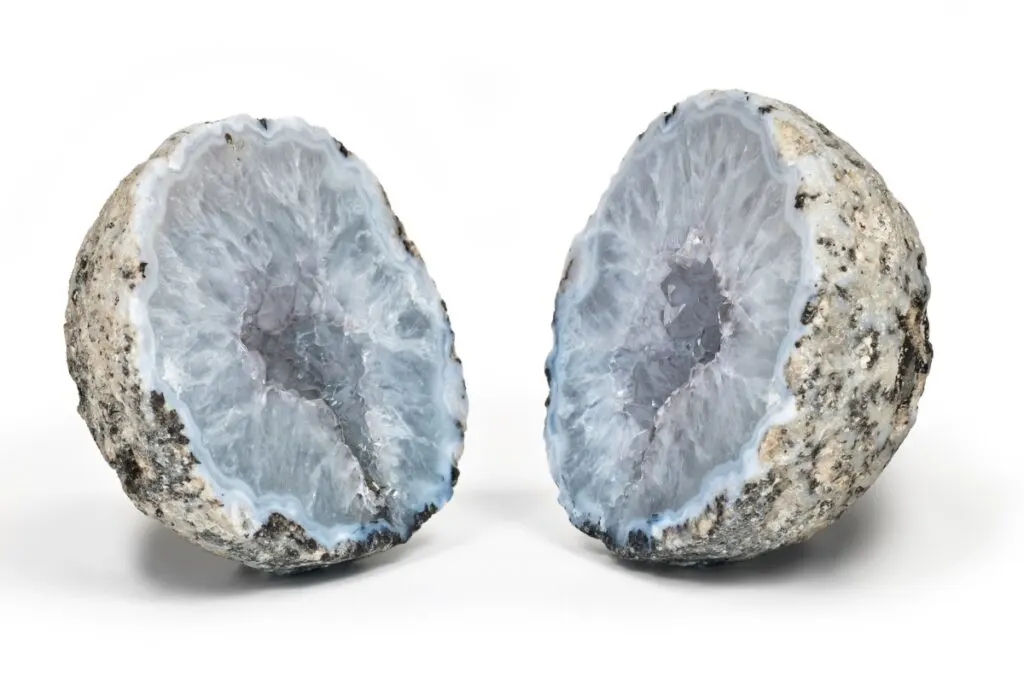
| Location | GPS Coordinates |
|---|---|
| No Name Creek | 65.299119, -146.508946 |
| Kobuk River | 66.967204, -160.448106 |
| Sheep Mountain | 61.673053, -144.143121 |
| Totem Bay | 56.494447, -133.407075 |
| Yukon River | 64.890799, -157.891464 |
| Denali | 63.066837, -151.037454 |
| Matanuska River | 61.794315, -147.502454 |
Rockhounds often find crystal-filled geodes in Alaska; occasionally, they come across thundereggs. Usually, the geodes found in Alaska contain quartz, amethyst, calcite, and even gold. Geodes come in all shapes and sizes; some are larger than basketballs in Alaska.
While thundereggs are much rarer and more difficult to find than geodes in this particular terrain, rockhounds have found these coveted treasures in this state, many of which were in the same locations as geodes.
To set yourself up for a successful geode haul, swing by No Name Creek, known to be one of the best areas for geodes in the state. You can also check out Sheep Mountain, the Kobuk River, or Totem Bay to find some gorgeous pockets of crystals to add to your collection.
TIP: If you have ever encountered a mesmerizing geode with splendid color in a crystal shop, you may have wondered if that piece is dyed or natural. Find out a complete guide in the article below:
How to Tell if a Geode is Dyed: All You Need to Know
Jasper
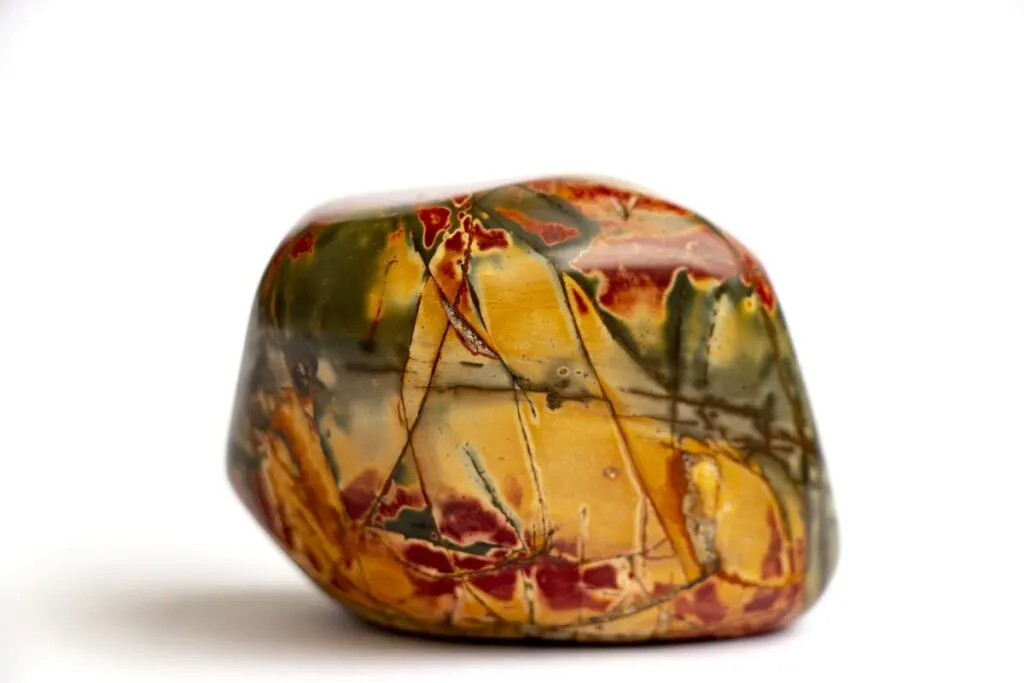
| Location | GPS Coordinates |
|---|---|
| Adak Island | 51.762659, -176.491949 |
| Little Nelchina River | 61.983462, -146.910423 |
| Becharof Lake | 57.821367, -156.142849 |
| Lower Ugashik Lake | 57.676409, -156.617463 |
| Caribou Creek | 61.958443, -147.755793 |
| Kuiu Island | 56.616404, -134.186878 |
| Toksook Bay | 60.540409, -165.076758 |
| Zarembo Island | 56.425159, -132.972084 |
Even though jasper isn’t a gemstone, it’s one of the most beautiful rocks you can pick up in Alaska. Red, green, earthy, and butterscotch jasper have all been found by rockhounds and geologists in this state, and they come in many shapes and sizes.
Red is the most common type of jasper discovered in Alaska, which often includes shiny pyrite flecks.
Jasper is often found on the islands and beaches of Alaska, so be sure to check out Adak Island, Kupreanof Island, and Attu Island. Other common sites for jasper are Becharof Lake, Caribou Creek, and Little Nelchina River.
TIP: Jasper is one of the most widespread gemstones with distinct properties for identifying real stones. Check out the step-by-step guide in the article below:
Identifying Real Jasper Mineral (Step-by-Step Guide)
Soapstone
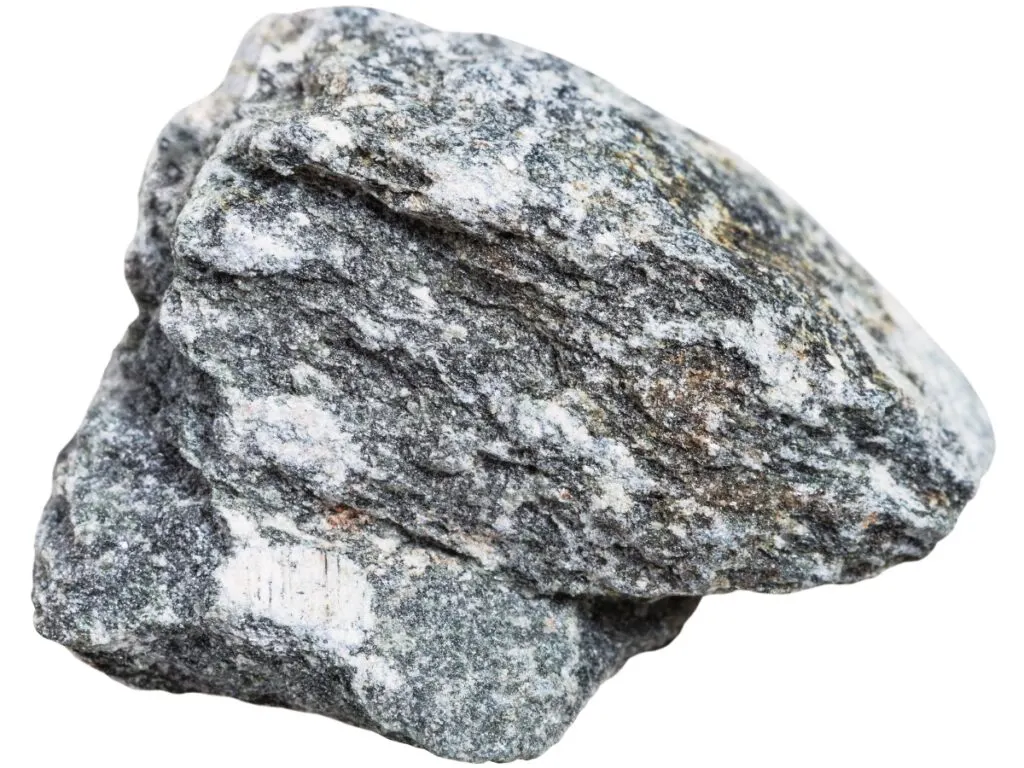
| Location | GPS Coordinates |
|---|---|
| Brooks Mountain Range | 68.199951, -152.251631 |
| Siksikpuk River | 68.222915, -152.253101 |
| Toklat River | 64.453791, -150.312546 |
| Teklanika River | 64.470724, -149.320542 |
| Denali | 63.066824, -151.013601 |
| Nome | 64.487966, -165.333914 |
| Tanana River | 64.793565, -147.665915 |
Although soapstone can be found in many areas of the U.S., people usually associate it with Alaska due to its large quantity in the state. Alaskan soapstone comes in many colors, including white, grey, black, and green, and all these variations can be found all over the state.
To this day, Alaskans prefer soapstone over other materials for carvings and sculptures due to its durability, workability, high polish, and natural beauty.
Any rockhound who wants to add Alaskan soapstone to its collection should visit the Brooks Mountain Range. This range has more than enough soapstone for eager rockhounds to collect, and visitors might also come across quartz and other minerals in this region.
BTW: Do you want to know more about rock and mineral identification? The books listed below are the best ones you can find on the internet (Amazon links):
- Smithsonian Handbooks: Rocks & Minerals
- Gemstone & Crystal Properties (Quick Study Home)
- Ultimate Explorer Field Guide: Rocks and Minerals (National Geographic Kids)
What Minerals Are Found in Alaska
From sparkling gold to striking jade, there is a wealth of minerals in Alaska just waiting for the right rockhounds to find them, including:
Gold
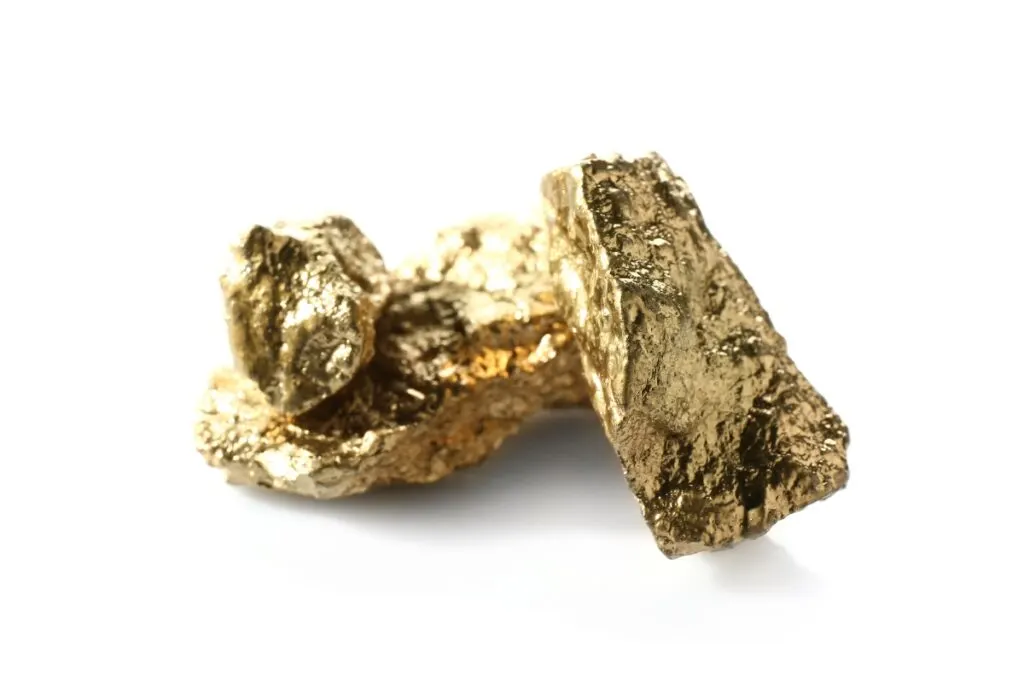
| Location | GPS Coordinates |
|---|---|
| Yukon River | 65.169280, -151.510772 |
| Chena River | 64.835584, -147.581188 |
| Kenai Peninsula | 60.171268, -150.251404 |
| Bonanza Creek | 60.827486, -149.524239 |
| Juneau | 58.338560, -134.490423 |
| Nolan Creek | 64.931853, -166.256411 |
| Clear Creek | 61.751472, -151.068431 |
| Caribou Creek | 61.969948, -147.835970 |
Gold became the state mineral of Alaska in 1968, and it’s one of the main attractions for visiting rockhounds. During the mid-1800s and early 1900s, the Alaska gold rush began, and prospectors flooded in from all over to get their hands on the precious metal.
Over the years, Alaska has had multiple gold rushes, including the Klondike Gold Rush and the Nome Gold Rush, which shows that Alaska truly is overflowing with this valuable mineral.
Unfortunately, mining and panning for Alaskan gold were challenging in those times due to the ice and dangerous terrain, so many prospectors could not reach Alaska safely or obtain the gold they so desperately sought.
While acquiring Alaskan gold was difficult in the 1800s and 1900s, that’s not the case today. Fortunately, modern transportation and tools have made it much easier for anyone to visit and pick up gold in Alaska. All you need are the tools and locations to find this precious metal for your collection.
There are all kinds of rivers, lakes, mountains, and other areas in the state where rockhounds can collect gold, including the Yukon River, Nolan Creek, Kenai Peninsula, and Bonanza Creek, which was the first place gold was discovered before the Klondike Gold Rush.
TIP: Let’s dive deeper into the prime gold prospecting locations in Alaska in the article below:
Gold Prospecting in Alaska: 6 Best Locations & Laws
Jade
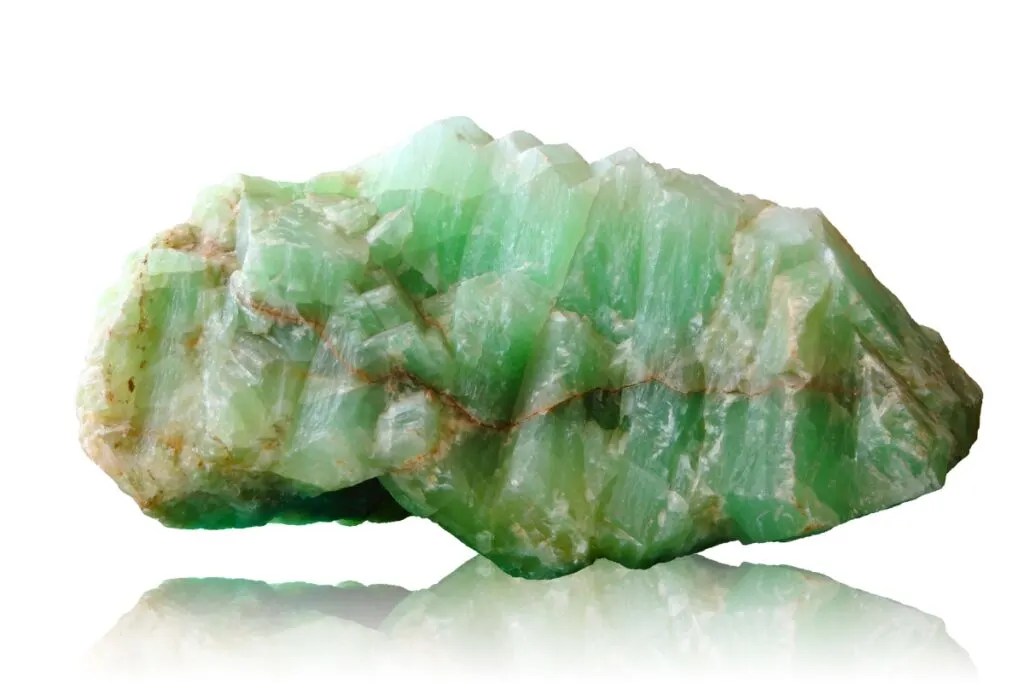
| Location | GPS Coordinates |
|---|---|
| Jade Mountain | 67.244941, -158.052029 |
| Dall River | 66.042250, -149.257615 |
| Kobuk River | 66.841566, -161.027971 |
| Shungnak River | 67.184000, -156.606402 |
| Noatak River | 67.065679, -162.478542 |
| Jade Creek | 67.183998, -158.125760 |
| Ambler | 67.086695, -157.853762 |
Jade became the official state gem of Alaska in 1968, and you can find this exquisite green stone all over this state. Alaska’s Jade Mountain is a large mountain made entirely of jade.
“Jade” is generic and refers to two minerals: jadeite and nephrite. The type of jade found in Alaska is mostly nephrite, and although both jadeite and nephrite are durable gemstones, jadeite is a harder material.
With that being said, nephrite is still a hard gemstone and Alaskan natives used it to fashion weapons and tools.
Undoubtedly, the most common color of nephrite is shades of green, but Alaska jade can also come in yellow, black, red, white, and even lavender. Lavender jade is the rarest and most valuable kind of jade from Alaska.
While you can find jade in many areas of Alaska, it’s most common near the Seward Peninsula, where Jade Mountain is located. Rockhounds can also find this valuable mineral near the Kobuk, Dall, and Shungnak rivers.
TIP: Identifying real jade is challenging and requires professional gemologist help and state-of-the-art laboratory equipment for expensive stones. Find out a complete guide in the article below:
Identifying Real Jade Mineral (Step-by-Step Guide)
Garnet
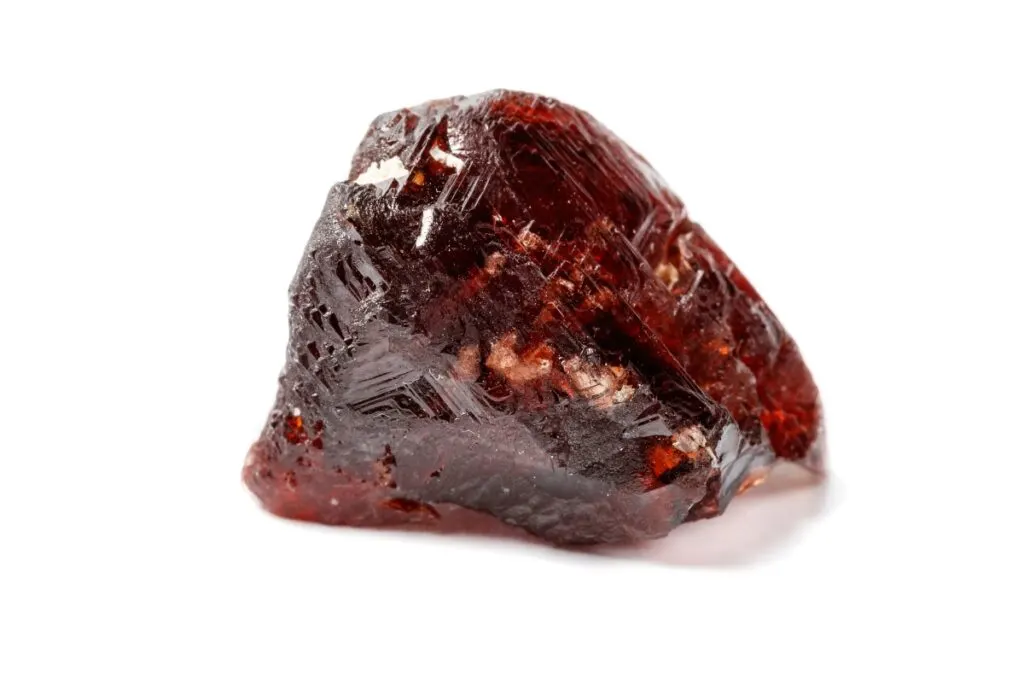
| Location | GPS Coordinates |
|---|---|
| Wrangell | 56.365867, -132.098029 |
| Stikine River | 56.676653, -132.002350 |
| Garnet Ledge Cabin | 56.578026, -132.365898 |
| Tongass National Forest (& surrounding areas) | 56.750449, -132.990890 |
| Mitkof Island | 56.617020, -132.826665 |
| McCarthy | 61.381662, -142.994702 |
| Mendenhall Lake | 58.440670, -134.545349 |
Did you know that the world’s largest garnet mines are located near Wrangell, Alaska? In the 1980s, Alaskan children used to go garnet hunting in Wrangell, collecting these rosy-colored minerals and then selling them to visiting tourists along the waterfront.
Most of the garnets found in Alaska are embedded in mica schist, so remember to bring all the necessary tools to free these lovely gemstones and add them to your collection.
If you’re searching for Alaskan garnets, Wrangell and the surrounding areas are the best places to go. Stop by Garnet Ledge Cabin or the Stikine River on your journey to pick up a few of these stunning stones.
TIP: Garnet is a highly valued gemstone. Many people know garnet as an inexpensive, dull red mineral. Check out the complete guide on garnet’s value in the article below:
5 Crucial Factors of Garnet Value: What’s the Garnet Worth?
Amethyst
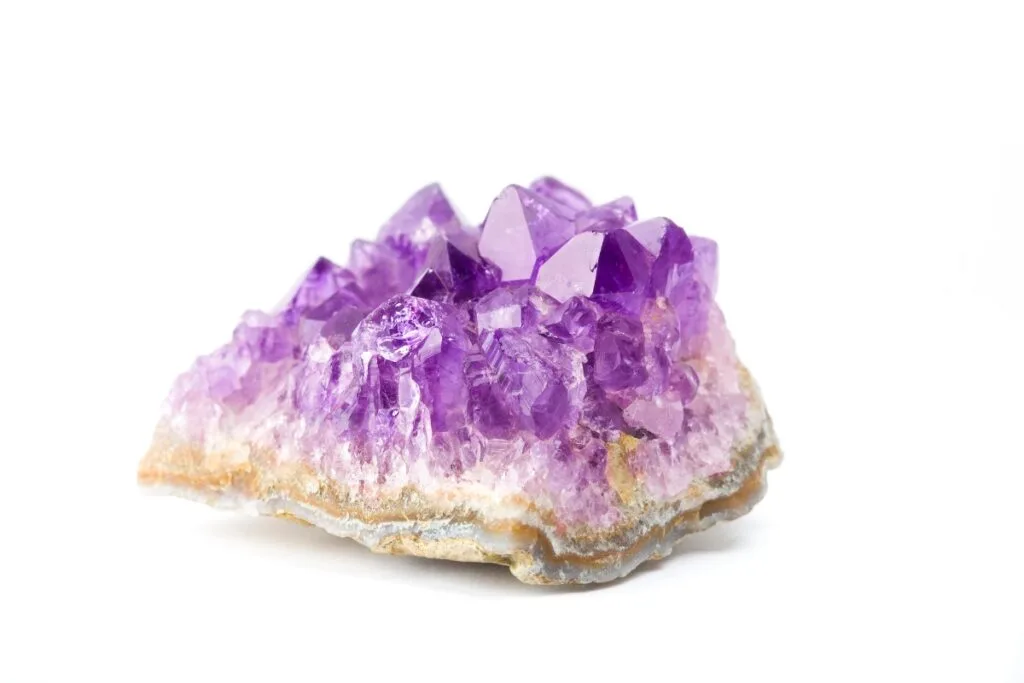
| Location | GPS Coordinates |
|---|---|
| Denali | 63.666446, -148.856128 |
| Healy | 63.857087, -148.935779 |
| Tok | 63.367242, -142.858001 |
| Fish Lake | 62.947852, -141.815339 |
| Kobuk River | 66.913864, -160.826992 |
| Fairbanks North Star Borough | 64.747086, -147.520358 |
| Brooks Mountain Range | 68.198645, -152.239615 |
When people think of amethysts, they often picture them in geode formations; however, Alaskan amethyst is unique because it comes in a single point or a small cluster rather than a geode.
This eye-catching purple mineral is often found in areas with granite and quartz; fortunately, many areas in Alaska have more than enough to spare. Although it’s not as common as quartz, rockhounds often have no trouble finding beautiful amethysts in various areas of Alaska.
Denali is known for being rich in amethyst, so check it out and any surrounding areas. Some other areas to look at include Tok, Northway, and the surrounding areas since they are also known for their amethyst.
TIP: Amethyst’s value depends on various factors like its color, the saturation of the color, the crystal form, and whether it is a separate crystal or a druse. Find out more in the article below:
Amethyst Value: Main Factors & Prices for Different Units
Cinnabar

| Location | GPS Coordinates |
|---|---|
| Crooked Creek | 61.875588, -158.133960 |
| Red Top Mine | 63.553705, -150.894064 |
| Eureka Creek | 63.544721, -150.893034 |
| Glacier Creek | 63.574793, -150.882220 |
| Kolmakof Mine (near Kolmakof River) | 61.733400, -158.793918 |
| Red Devil Creek | 61.754818, -157.320026 |
| Canyon Creek | 60.722639, -149.450772 |
If you’re a rockhound who loves colored minerals, you’re in luck. Cinnabar, also known as “Dragon’s Blood,” is a deep red mineral that miners and natives have collected from Alaska for hundreds of years. Because of its rich and brilliant color, people often use Alaskan cinnabar for art, painting, decorations, and jewelry.
Before you go hunting for this colorful stone, remember that some rockhounds caution against collecting it since its main chemical component is mercury, which is highly toxic to the human body.
Even so, there are plenty of rockhounds and native Alaskans who handle this mineral and even wear it as jewelry since the mercury is locked in a solid state that’s not very bioavailable, meaning it’s unlikely it can bring harm to the body.
With that being said, always use caution when handling cinnabar, and remember that there is some risk involved when handling minerals that contain mercury.
As mentioned, cinnabar is scattered all over Alaska, but some of the best places to look are on the outskirts of commercial plots and mines. A few places to check out include Crooked Creek, Kolmakof Mine Site, and Red Top Mercury Mine.
Recommendation box: All tools and equipment you need for rockhounding and rock identification* (Amazon links):
1. Estwing Rock Hammer – Light, comfortable, and extremely durable hammer.
2. Estwing Geologist Pick – Classic and the most trusted paleo pick in the world.
3. Finder 12-inch Chisels – Heavy-duty chisels set with hand protection.
4. Mini Handle Shovel – This is a great tool for digging deep in the dirt.
5 Ironclad Utility Work Gloves – Breathable, but they also protect the areas requiring them most.
6. 3M Safety Glasses – Comfortable and efficient goggles for rockhounding.
7. Convoy 8+ UV Light – 365nm UV LED flashlight with a patented glass filter.
8. Wesley’s Jewelers Loupe – High magnification options (30X and 60X) with carrying case.
9. Mohs Hardness Kit – A specially designed kit for rockhounds
*All recommended products are personally tested and regularly used by experts from this website.
FAQ About Common Rocks & Minerals in Alaska
Before you go on a rockhounding trip in Alaska, use the FAQs listed below to learn more about the interesting rocks and minerals in this state.
What Rare Rocks Can You Find in Alaska
Any rockhound who wants to add rare rocks to their collection will not be disappointed with Alaska, a state that’s known for its beautiful pieces of obsidian, geodes, and even thundereggs. You can also find agates in many colors, shapes, and sizes.
If you stop by Alaskan beaches and the shores of Kodiak Island, you can find valuable and colorful pieces of sea glass to add to your collection.
Sea glass comes in all the colors of the rainbow, and some rarer pieces and colors found in Alaska sell for top-dollar prices. Wherever you go in Alaska, you’re sure to find rare and beautiful rocks that satisfy any rockhound’s heart.
What Rare Minerals Can You Find in Alaska
Alaska has many rare minerals, but none are as popular as Alaskan gold. Alaskan gold has a long and unique history, and while there have been multiple gold rushes in this state, there is still plenty of gold waiting for rockhounds in the Yukon River and surrounding streams.
In addition to gold, you can collect lovely pieces of nephrite jade during your Alaskan adventures. You can find pieces of jade, Alaska’s state gemstone, near Jade Mountain. Some other rare minerals to watch in Alaska include garnets, amethyst, fluorite, rhodonite, and cinnabar.
What is the Most Famous Rock or Mineral Found in Alaska
Alaska is famous for one of the planet’s most popular and valuable minerals: gold. This shimmering material was so common in Alaska that it started the Klondike Gold Rush during the mid-1800s and the Nome Gold Rush during the early 1900s. Although there were multiple gold rushes, plenty of gold remains in this expansive state, so don’t worry!
Look around Nome, Fairbanks, the Yukon River, and Caribou Creek to find some shiny nuggets of your own. Before prospecting for gold, familiarize yourself with Alaska’s gold prospecting laws to ensure that you do so legally.
Conclusion
From unique rocks to glittering minerals, Alaska’s vast terrain has almost everything a rockhound could want. Pick up some gold near the Yukon River or stop by the areas near Jade Mountain for some jade stones.
With garnets, jasper, cinnabar, obsidian, and more, Alaska is truly filled with lovely treasures that are just waiting for the right rockhound to notice them. For your next rockhounding adventure, book a trip to Alaska; you won’t regret it!
TIP: Alaska’s northern regions are generally the best places for gem hunting, but let’s see precisely what areas are worth it and see what you can find in the article below:
Best Rockhounding Sites in Alaska & What You Can Find
